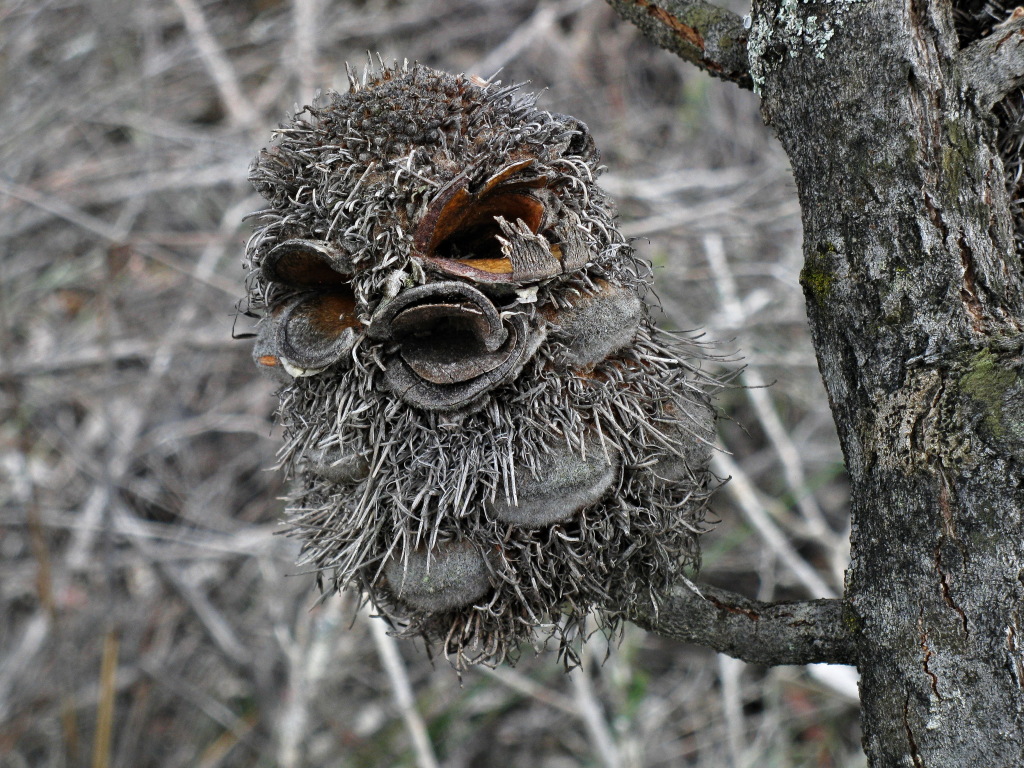Banksia ornata
F.Muell. ex Meisn. Desert BanksiaShrub to c. 3 m high; lignotuber absent; bark thin, grey; branchlets slightly ribbed, hirsute to pubescent with a mixture of spreading and short, curled hairs. Leaves alternate, narrowly obovate to obovate-cuneate, 3–10 cm long, 4–25 mm wide, slightly discolorous, upper surface green, at first hirsute, soon glabrous, lower surface at first loosely woolly, finally glabrescent; margins serrate except near base, more or less flat or slightly recurved; apex obtuse to truncate, mucronate; petiole 1–5 mm long. Inflorescence 5–11 cm long, 7–9 cm wide at anthesis. Tepals 30–35 mm long, cream with a grey to pale ferruginous limb, hairy, persistent; style gently curved in upper third, persistent. Follicles to c. 50, 15–30 mm long, densely tomentose-hirsute, grey, opening only after fire. Body of seed more or less cuneate, 8–11 mm long, wing 21–25 mm long. Flowers mainly May–Sep.
LoM, MuM, Wim, GleP, VRiv, GGr, DunT. Also SA. In Victoria confined to far west between Murrayville and the Grampians with outlying populations near Casterton. Usually grows in deep sand in heathland or mallee scrub and often locally common.
Jeanes, J.A. (1996). Proteaceae. In: Walsh, N.G.; Entwisle, T.J., Flora of Victoria Vol. 3, Dicotyledons Winteraceae to Myrtaceae, pp. 830–887. Inkata Press, Melbourne.
 Spinning
Spinning


